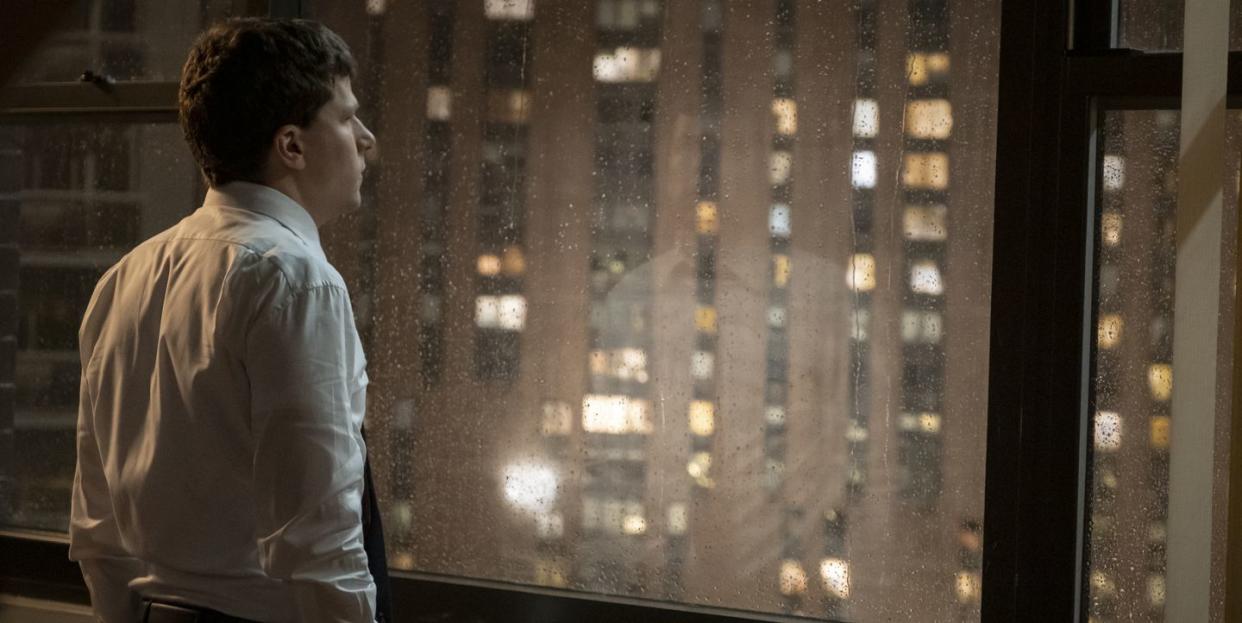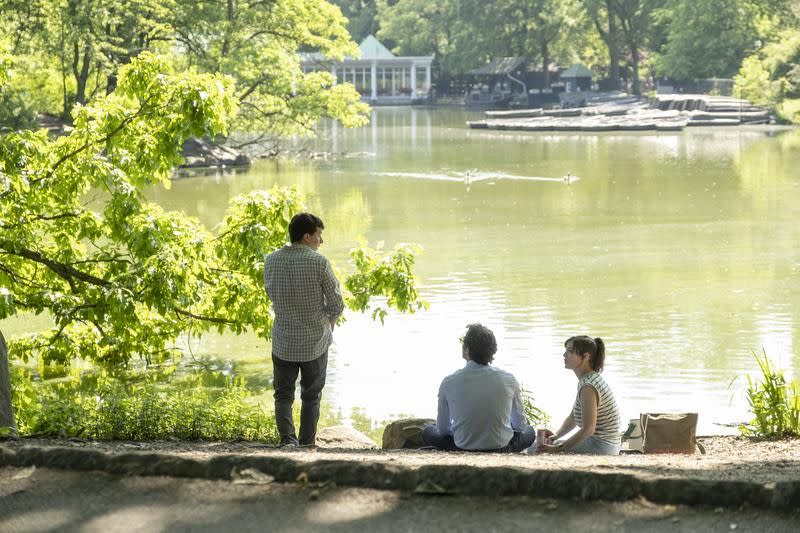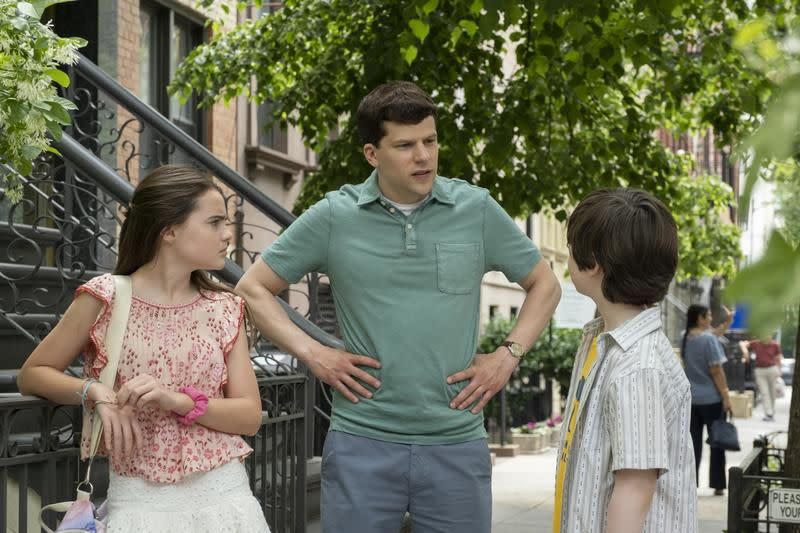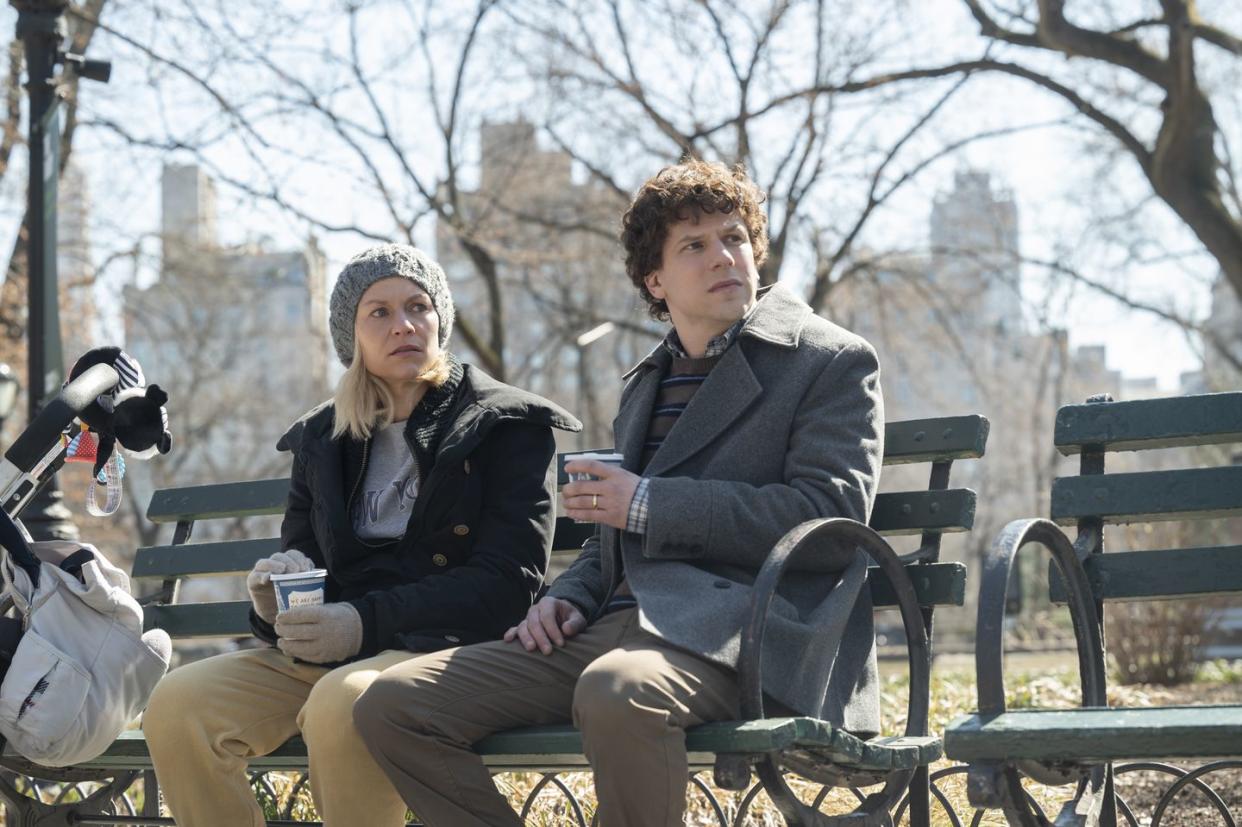How Fleishman Is In Trouble Captured New York City on Screen

"Hearst Magazines and Yahoo may earn commission or revenue on some items through the links below."
“It felt as close to the Sex and the City bus scene as I’ll ever get,” says Taffy Brodesser-Akner. The writer—who penned the novel Fleishman is in Trouble and also wrote and produced the adapted TV series Fleishman is in Trouble, airing now on FX on Hulu—is recounting the moment every first-time showrunner dreams of, that one when she’s almost mowed down by a taxi covered in advertising for her new series. “The cab was not gunning for me; I was jaywalking and jumped out of the way,” she says. “I'm not on the taxi, but I felt the same way as I do when I'm walking through the city and seeing advertisements. There's part of me that wants to scream, ‘I wrote this!’”
Brodesser-Akner’s book and the series it inspired are both distinctly New York stories. Specifically, they’re about an Upper East Side doctor, Toby Fleishman, who’s newly divorced, surprisingly popular on the dating apps, and reunited with old friends who really get him when his ex-wife goes mysteriously missing and complicates everything. Fleishman tackles big ideas about having too much but still not enough, the strangers to whom we’re related, and the things people want as opposed the things they think they deserve. So much of what the series—which stars Jesse Eisenberg, Lizzy Caplan, Claire Danes, and Adam Brody—gets right is the anxiety ridden imbalance of modern day, rich-but-not-that-rich city dwellers, but perhaps even more important than that is the real estate.

The series leaps from regular Upper East Side apartment buildings (for the average elite) to grand Upper East Side apartment buildings (for those who’ve truly arrived) and makes its way through all the coffee shops, diners, bookstores, and cutthroat primary schools in between. It was vital to get those parts right. “I have this thing where if I'm told I'm watching something that takes place in New York, if I can't reconcile the locations in my head, it just becomes too much work for me to wonder what they're trying to convey,” Brodesser-Akner says. Still, shooting in her hometown wasn’t exactly a walk in Prospect Park.
“It's not that New York makes it particularly difficult [to film here,] it's that New York is particularly difficult for everything,” she says. “We had a great location manager, but it is not an elegant thing to move an entire company. Sometimes you couldn't get a location. Sometimes locations were like, ‘No, we don't need you.’ Sometimes you're shooting just one scene on a corner, and you want to use the coffee shop that's on that block so you don't have to move the entire company, and you can't because the coffee shop is like, ‘No, it’s not worth it to us to alienate our customers.’ New York locations have a New York attitude.”

But that didn’t stop Fleishman from getting the goods. Some sets had to be built—the one percent aren’t always clamoring to loan their apartments out to TV productions so in some cases hotel rooms had to do—but the series managed to shoot extensively inside landmarks like the 92Y, the Corner Bookstore, and Temple Shaaray Tefila. Of all the locations where the series filmed, Brodesser-Akner says, “the triumph was shooting inside a New York City bus. That’s the hard location to get.”
It was all worth the effort for what viewers will see on screen to line up with the specific places where Fleishman the book played out. “The locations I chose were locations that were in the book, and the reason they were in the book is because I knew them very well,” Brodesser-Akner says. “Also, when I was writing this book, I lived in New Jersey and I really, really hated living in the suburbs. I had a New Yorker's disdain for New Jersey, though I feel like the New Yorker’s disdain for other places is just another way of loving New York. So, when I was writing, I was also longing for New York. It made me feel better in what I called my exile—even though it was 15 miles away—to be writing inside those locations that I knew well.”

Another thing Fleishman does is to take a different view of the Upper East Side than television and film often do. Fleishman’s world has money and glamour on its periphery, but the heart of the action is decidedly east of Park Avenue. “I moved to the Upper East Side after college not for any reason other than that it was the only region of New York that I could afford,” Brodesser-Akner says. “I have to say without irony, I really liked it there. Also, it was shocking to me how much wealth there was a block or two away from me. I could not believe that you could live the way I was living—in a one bedroom made into a two bedroom—and blocks away, someone had an apartment that had the same height as three floors in my building.”

The author herself might have lived a normal life—she frequented a bagel place that might not even have had a name, she was close with her Aunt Lois and Uncle Alan who lived nearby—but the tension of the area was enthralling nonetheless. “That area of town never stopped fascinating me for the fact that you could be a totally solvent person, considered wealthy by most of this country, and consider yourself poor because of what you were surrounded by,” she says. “I've never stopped thinking that was interesting. I never stopped exploring the idea that however much you have, somebody has more, and you are always left to face your own character defects about what that means.”
You Might Also Like
